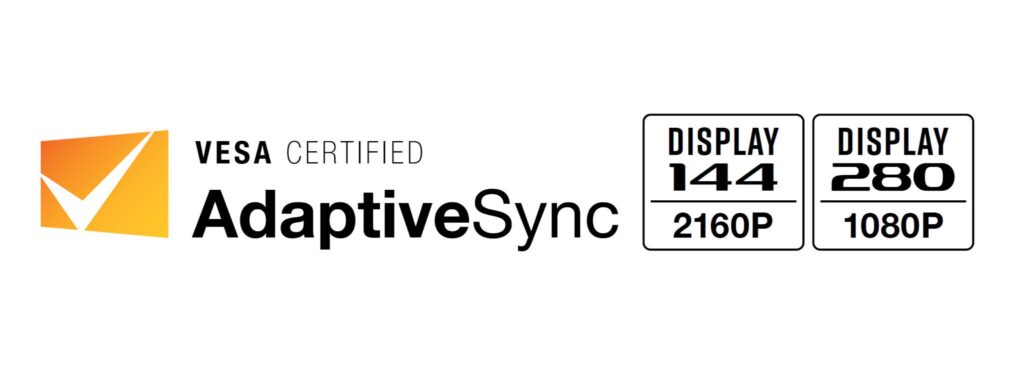VESA has recently announced an update to its Adaptive-Sync Display compliance test specification (CTS). The latest version, Adaptive-Sync Display v1.1a, includes new testing processes and a logo for new “Dual-Mode” gaming monitors, which offer multiple native refresh rates.
With this optional “Dual Mode” testing and logo, display OEMs with eligible hardware can certify their displays at two sets of resolution and refresh rates, such as 4K/144Hz and 1080p/280Hz. The Adaptive-Sync Display v1.1a update does not alter any testing requirements, so products previously certified to the v1.1 standard are still valid.

Furthermore, the new Adaptive-Sync Display v1.1a standard allows display OEMs to obtain a higher AdaptiveSync Display refresh rate certification for displays that offer an “overclocked” or faster mode option not set by default in the factory configuration. In such cases, the overclocked mode must support Adaptive-Sync-enabled GPUs in a non-proprietary way, and the display must pass all of the stringent Adaptive-Sync Display compliance tests in both the factory default mode and the overclocking mode.
All requirements of the Adaptive-Sync Display CTS must be met at both tested resolutions, including a minimum of 144Hz at maximum resolution and a minimum of 1080p vertical resolution when tested in the reduced resolution/maximum refresh rate mode. This includes refresh rate, flicker, G2G response time (including limits on overshoot and undershoot to ensure high-quality images), video frame drop, and video frame rate jitter.
The new testing processes don't apply to the VESA Certified MediaSync Display programme.
Discuss on our Facebook page, HERE.
KitGuru says: What's your take on the changes to VESA Adaptive-Sync Display v1.1a CTS?
 KitGuru KitGuru.net – Tech News | Hardware News | Hardware Reviews | IOS | Mobile | Gaming | Graphics Cards
KitGuru KitGuru.net – Tech News | Hardware News | Hardware Reviews | IOS | Mobile | Gaming | Graphics Cards


